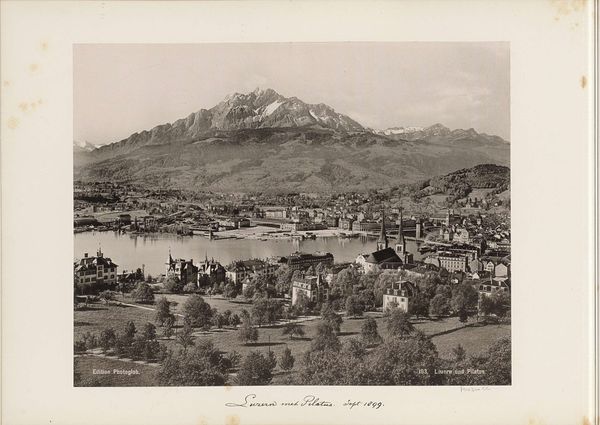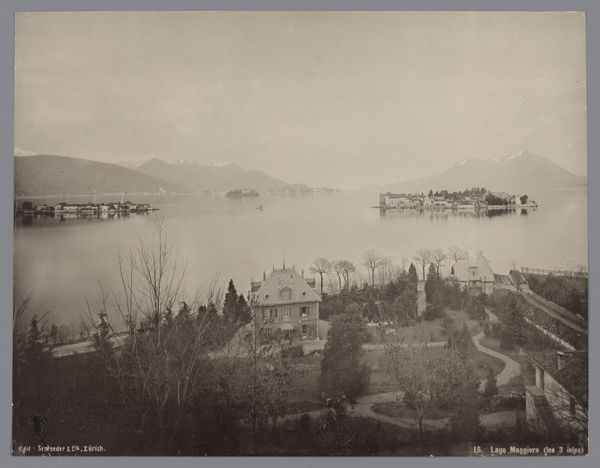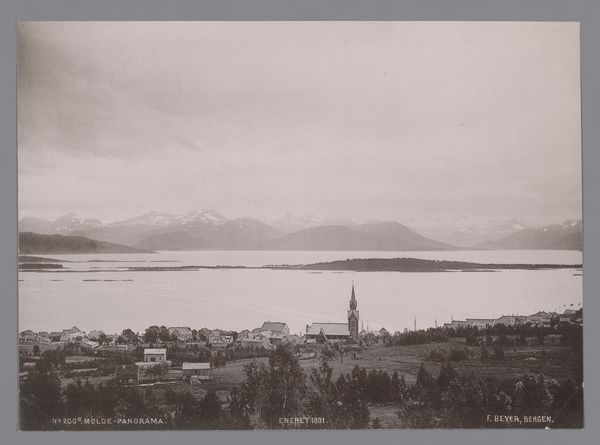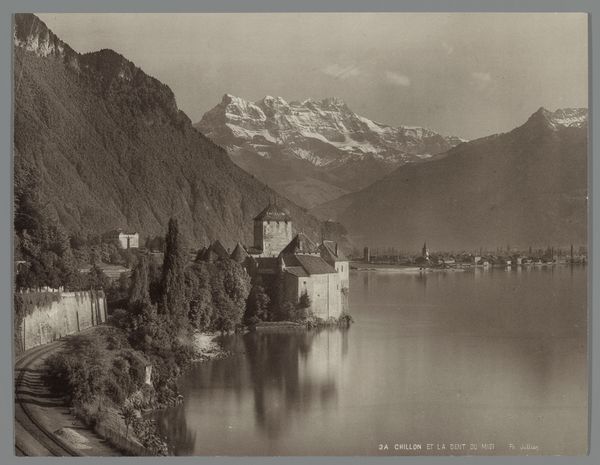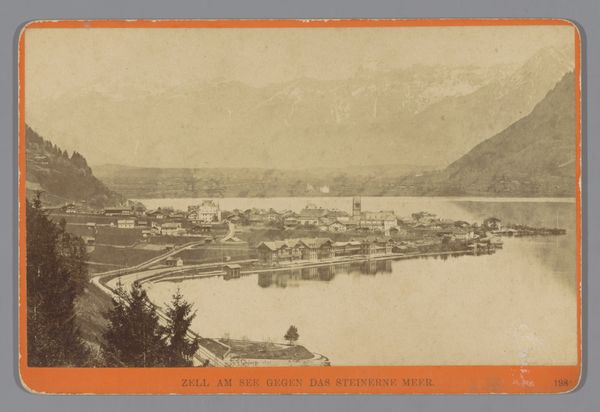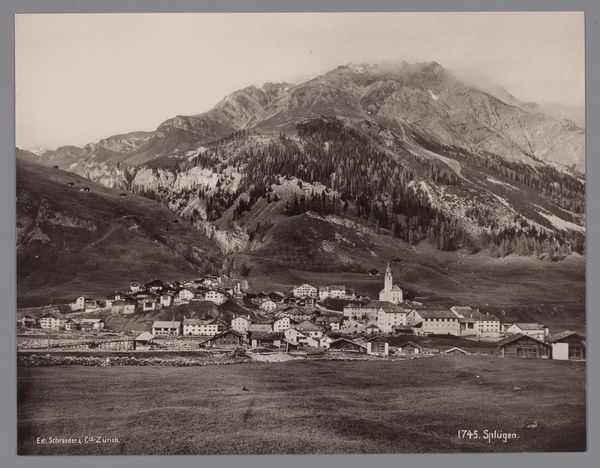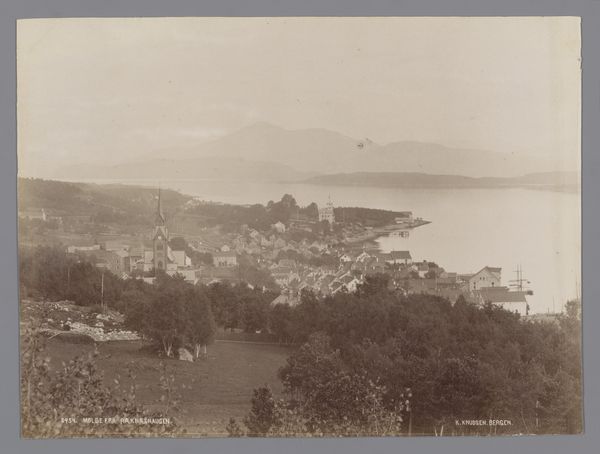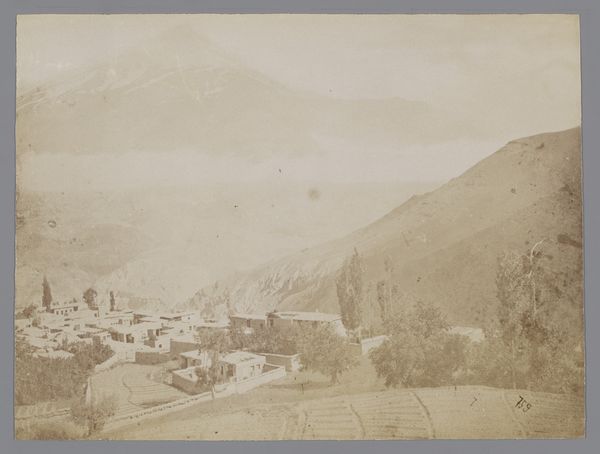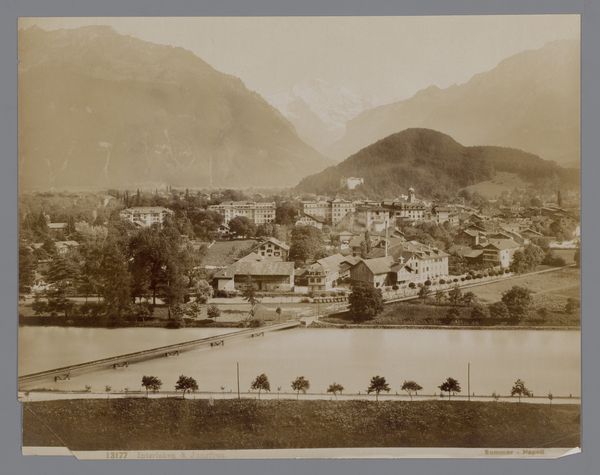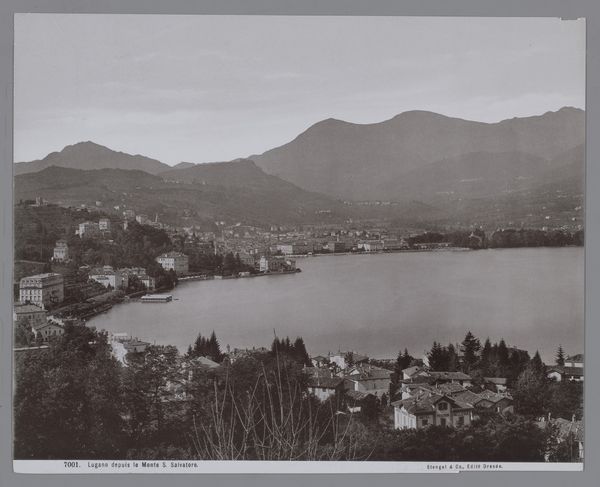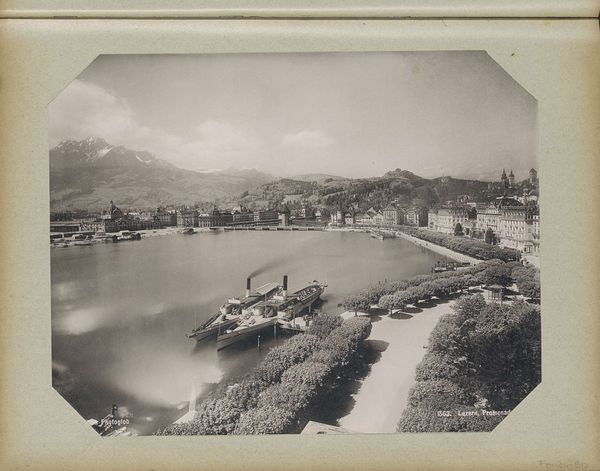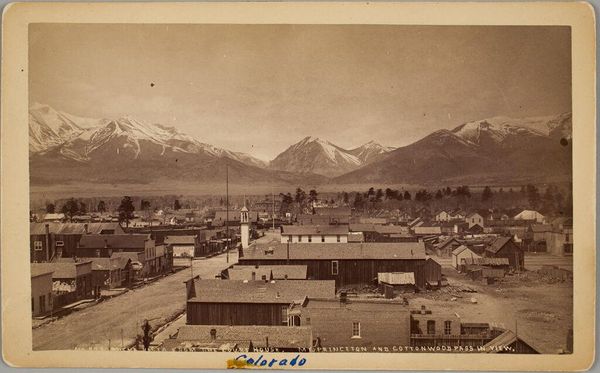
print, photography
#
pictorialism
# print
#
landscape
#
photography
#
cityscape
Dimensions: height 207 mm, width 270 mm
Copyright: Rijks Museum: Open Domain
Curator: Here we have "Luzern met berg Pilatus, Zwitserland," a photograph created before 1899 by Photoglob & Co. This piece resides within the Rijksmuseum collection and presents a cityscape bathed in a soft, pictorialist light. Editor: My immediate feeling is one of serene stillness. The composition, the almost dreamlike monochrome palette, it evokes a palpable sense of romantic detachment. Curator: Indeed. The use of photography to create that emotion is interesting because we tend to view the medium as objective, when of course, framing and lighting were as deliberately crafted then as they are today to affect emotional impact. Early photography frequently engaged with social debates around industrialization. One wonders if the composition in Luzern is suggesting refuge or looking at an imposition. Editor: I am fascinated by how mountainscapes so frequently act as symbols of both the sublime and the untamed. Here, Pilatus looms, majestic yet somehow passive, overseeing the cityscape nestled below. It evokes that common cultural yearning to be small and safe in the face of such grandeur. Curator: Absolutely, it's difficult to divorce landscape from power and perspective, isn't it? Consider that mountain’s visibility. Whose gaze does it invite, and whose does it block? We must be conscious that photography during this period became entwined with the power dynamics of exploration, empire, and class privilege. It both documented and shaped a worldview predicated on observation and categorization. Editor: Yes, the gaze! And thinking of "gaze", the image reminds of the sublime power represented in Caspar David Friedrich's work in painting, particularly those paintings dealing with solitary figures within a vast landscape, figures rendered deliberately tiny to reinforce the sheer overwhelming force of nature. One almost longs for a tiny, contemplative figure here. Curator: While Friedrich offers individual introspection, the lack of such a figure is also impactful when looking at it from a class perspective: this is meant to represent civilization as a whole existing, hopefully coexisting, in this grand landscape. The early city as idea. Editor: Perhaps. The power lies in the collective potential rather than the individual journey of Friedrich's wanderers. Looking closely, though, that duality feels very potent in this specific image. I leave here reflecting on landscape, representation, and that age-old pull towards the dramatic serenity of mountains. Curator: And I'm pondering what a view says, whose purposes does it serve and whom is omitted in its creation. Always something to discuss when examining history.
Comments
No comments
Be the first to comment and join the conversation on the ultimate creative platform.
